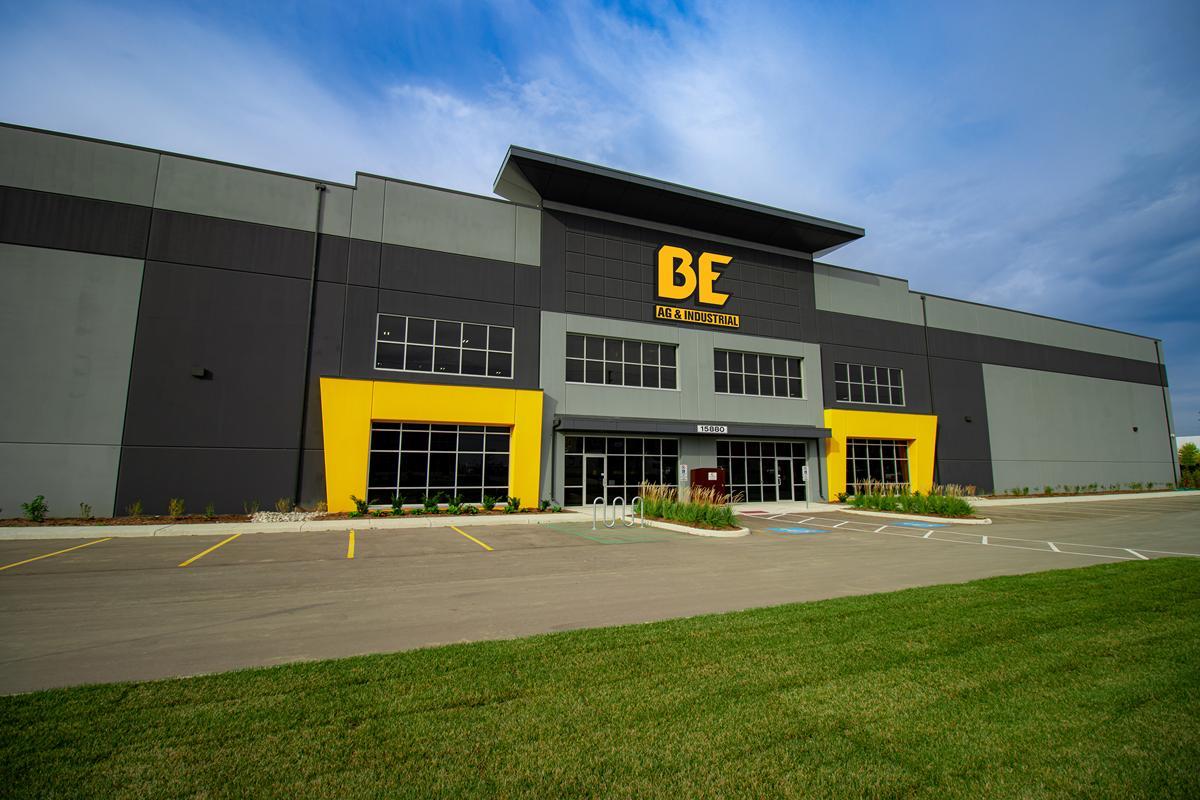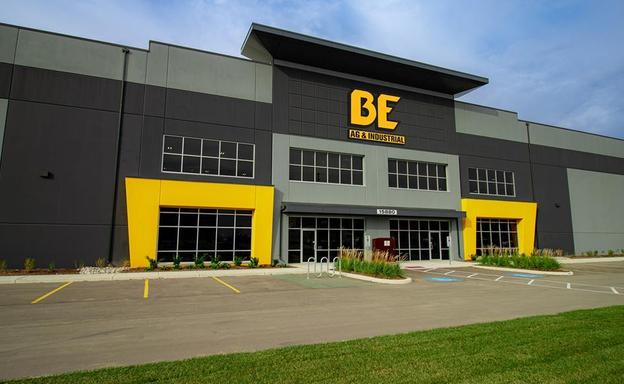Braber Equipment
Summarize the project's program, features, and achievements: Braber Equipment, a renowned manufacturer of commercial and industrial equipment, decided to expand its presence in London, Ontario, by constructing a new 100,000-square-foot warehouse. They opted for tilt-up construction to fulfill their requirements of innovative features, efficient construction, and durability. Tilt-up construction was chosen due to several factors, including lower heating/cooling costs, the durability of concrete walls, and the speed of construction. Despite challenges faced during the project, such as supply chain disruptions caused by the COVID-19 pandemic, the speed of tilt-up construction helped to mitigate delays, resulting in a final delay of only one month. The exterior and some interior panels of the warehouse were built using tilt-up construction. By casting each panel on a temporary casting slab and tilting them into place, time was saved and site complexities were reduced. A large crane was utilized to lift the panels into position, enabling the entire facility's walls to be erected within one week. The benefits of tilt-up construction for Braber Equipment's business were significant. The new warehouse demonstrated improved energy efficiency, maintaining constant temperature and humidity levels.
What obstacles were overcome related to the schedule, budget, program, specification, site, etc. on this project? The project faced challenges related to the schedule, budget, and site, particularly due to supply chain disruptions caused by the COVID-19 pandemic. The delayed arrival of materials affected the construction timeline, pushing the anticipated start date from early fall to late fall 2021. Consequently, weather issues during late fall impacted on-site development. However, the speed of tilt-up construction played a crucial role in recouping time and mitigating delays. From concrete form layout to concrete placing and tilting, the process helped to expedite the construction schedule. Ultimately, the project was completed with a delay of only one month, outperforming other similar projects underway during the same period.
Please communicate any engineering complexities or unique features of the panel design for this project. ? The project faced challenges related to the schedule, budget, and site, particularly due to supply chain disruptions caused by the COVID-19 pandemic. The delayed arrival of materials affected the construction timeline, pushing the anticipated start date from early fall to late fall 2021. Consequently, weather issues during late fall impacted on-site development. However, the speed of tilt-up construction played a crucial role in recouping time and mitigating delays. From concrete form layout to concrete placing and tilting, the process helped to expedite the construction schedule. Ultimately, the project was completed with a delay of only one month, outperforming other similar projects underway during the same period.
What is the potential for this project's impact on the community and/or environment? The project's potential impact on the community lies in its contribution to the local economy and job creation. By expanding their operations and supply capabilities in London, Ontario, Braber Equipment improves access to commercial and industrial equipment, serving the Eastern Canada market more efficiently. In terms of the environment, the energy efficiency of the tilt-up construction, including insulated panels and temperature control measures, contributes to sustainability by reducing energy consumption and carbon emissions. The efficient use of space through tall panels also optimizes land utilization, potentially conserving greenfield areas. Overall, the project's impact on the community and environment stems from its positive economic contributions, energy efficiency, and sustainable design elements, further solidifying Braber Equipment's presence in the Ontario market.

Project Location
London, ON N4V 0A4
Canada
Project Images
Project Team (TCA Members)
- Developer/Owner:
- General Contractor:
- Concrete Contractor:
- Tilt Wall Ontario
- Architect:
- Engineer:
- Krahn Engineering LTD
- Suppliers:
- Photographer(s):
Project Specifics
- Project Category:
- Distribution
- Building Types:
- Warehouse
- Finishes:
- Paint (Textured)
- Features:
- Reveals
- Shadow Panels
- Insulation:
- Sandwich Panel (Non-Composite)
- Environmental:
- Number of Floors:
- 1
- Tilt-Up Wall Area:
- 52,658 sq ft (4,892 sq m)
- Total Floor Area:
- 100,000 sq ft (9,290 sq m)
- Project Footprint:
- 100,000 sq ft (9,290 sq m)
- Tallest Panel:
- 46 ft 0 in (14.02 m)
- Widest Panel:
- 33 ft 0 in (10.06 m)
- Largest Panel:
- 1,307 sq ft (121.4 sq m)
- Heaviest Panel:
- 135,945 lbs (61,664 kg)










